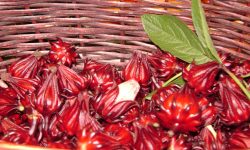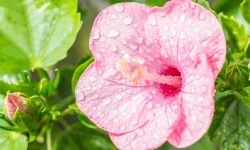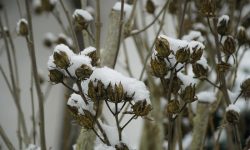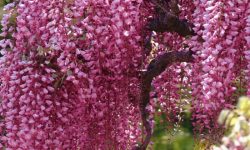Spirea is a beloved garden shrub, admired for its graceful arching branches and clusters of vibrant flowers. Its colorful blooms can brighten any landscape, drawing bees, butterflies, and garden enthusiasts alike. However, achieving a lush, flower-filled spirea requires more than simply planting it; proper pruning at the right time is key to unlocking its full potential. Knowing when to prune ensures not only abundant blossoms but also healthy, strong growth that enhances the shrub’s natural beauty.
Pruning spirea is both an art and a science. Cutting at the correct season revitalizes the plant, encourages fresh shoots, and prevents overcrowding that can stifle blooms. Mistimed or improper pruning can reduce flowers and weaken the shrub, making it less resilient. By understanding spirea’s growth cycles and pruning needs, gardeners can enjoy a flourishing, vibrant shrub that becomes a centerpiece of any garden throughout the seasons.
Understanding Spirea Varieties and Blooming Times
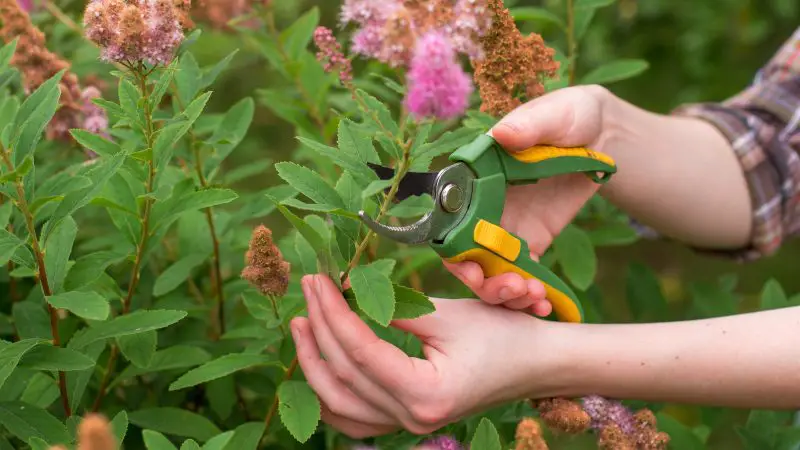
Spirea is a diverse genus, with varieties that bloom at different times, each bringing unique beauty to the garden. Some, like the early-blooming Spirea nipponica, flower in spring, offering delicate white or pink blossoms. Others, such as Spirea japonica, bloom in summer, displaying vibrant shades of pink, red, or purple. Knowing the specific variety in your garden helps determine the best pruning schedule and ensures maximum flowering potential.
Blooming time affects pruning strategy. Spring-flowering spirea produces flowers on old wood, so pruning should be done immediately after flowering. Cutting too early may remove buds, reducing blossoms the following season. Summer-flowering spirea, however, blooms on new wood, so early spring pruning encourages fresh shoots and more abundant flowers in summer. Understanding these differences is essential for maintaining healthy growth and vibrant blooms throughout the year.
In addition to bloom timing, growth habits vary among spirea varieties. Some grow compactly, ideal for borders or containers, while others spread, creating a natural, flowing effect. Recognizing the growth pattern helps gardeners decide how much to prune, which branches to remove, and how to shape the shrub for both aesthetics and flower production. By identifying the variety and its blooming cycle, you can tailor pruning practices to achieve continuous beauty and a thriving garden display.
Best Time to Prune Spirea
Pruning spirea at the correct time is crucial for encouraging blooms and maintaining healthy growth. For spring-flowering varieties, pruning should be done immediately after flowering. These types bloom on old wood, so cutting too early risks removing flower buds, resulting in fewer blooms the following season. Post-bloom pruning helps shape the plant, remove spent flowers, and stimulate new growth without sacrificing flowers. Timing this correctly ensures the shrub remains vibrant and prevents it from becoming overgrown or untidy.
Summer-flowering spirea blooms on new wood, so early spring is the ideal time for pruning. Cutting back in late winter or early spring encourages fresh shoots that will produce vibrant flowers in summer. This timing ensures the plant develops a strong framework of branches, supports proper air circulation, and prevents overcrowding. By removing older, weaker branches during this period, gardeners can direct the plant’s energy toward producing healthier stems and more abundant flowers. Observing growth patterns also helps identify any diseased or damaged wood that should be pruned to maintain overall plant health.
Local climate, sunlight exposure, and soil conditions can influence the precise timing for pruning. Gardeners in cooler regions may need to wait slightly longer to avoid frost damage, while those in warmer areas can begin earlier. Monitoring the shrub’s natural growth and bloom cycle allows for adjustments based on seasonal conditions. Regular observation ensures pruning occurs at the most effective time, maximizing flower production and maintaining plant vitality. Following these seasonal guidelines guarantees a flourishing spirea that enhances your garden with continuous, vibrant blooms throughout the year.
Tools and Techniques for Pruning Spirea
Essential Tools for Spirea Pruning
Using the right tools is crucial for clean cuts and healthy growth. Sharp hand pruners are ideal for smaller branches, allowing precise trimming without crushing stems. Bypass pruners work best for live wood, ensuring a smooth cut that promotes faster healing and reduces disease risk. For thicker branches, loppers or pruning saws are necessary. Maintaining tool cleanliness is equally important; disinfecting blades prevents the spread of pathogens between plants, preserving overall garden health. Regular sharpening ensures each cut is clean and effective.
Proper tool selection not only improves pruning efficiency but also minimizes stress on the plant. Sharp, well-maintained tools reduce tearing and damage, encouraging rapid wound closure. This leads to healthier growth, more abundant flowering, and a lower chance of fungal infections. Gardeners should also use gloves to protect hands from thorns and scratches while pruning. By combining the right tools with careful handling, pruning becomes safer, faster, and more effective, allowing spirea shrubs to thrive and produce vibrant, long-lasting blooms throughout the season.
Pruning Techniques for Optimal Growth
Correct pruning techniques are as important as timing and tools. For spring-flowering spirea, focus on removing spent blooms and lightly thinning branches after flowering. This stimulates new shoots and prevents overcrowding, ensuring sunlight and air reach all parts of the shrub. Avoid cutting too close to the main stems, as this can weaken the plant and reduce flowering potential.
For summer-flowering varieties, prune in early spring to shape the shrub and remove dead or weak branches. Make angled cuts just above a bud facing outward to encourage outward growth and maintain an open, balanced structure. Layered pruning helps maintain the natural flow of the plant while promoting uniform flowering. Regular maintenance pruning throughout the season can also remove diseased or damaged wood, ensuring ongoing health. Applying these techniques consistently maximizes blooms and keeps spirea shrubs attractive, healthy, and well-shaped year after year.
Pruning Young vs. Mature Spirea
Pruning young spirea is essential for shaping the shrub and establishing a strong framework. Newly planted spirea benefits from light pruning to encourage branching and develop a balanced structure. Removing weak or crossing stems allows the plant to allocate energy to healthy growth and prevents future overcrowding. Proper early pruning also sets the foundation for abundant flowering in the coming seasons, ensuring that the shrub grows evenly and maintains an attractive form as it matures.
Mature spirea requires a slightly different approach. Older shrubs may have dense, woody branches and may produce fewer flowers if left unpruned. Rejuvenation pruning is often necessary to remove old, less productive wood and stimulate new growth. Cutting back one-third of the oldest branches helps invigorate the plant while preserving its natural shape. This practice encourages fresh shoots that will bear flowers, prolongs the lifespan of the shrub, and ensures continued vigor. Timing is important, as pruning at the wrong period can reduce blooms and affect overall health.
Both young and mature spirea benefit from regular observation and maintenance. Monitoring growth patterns, identifying damaged or diseased stems, and selectively pruning helps maintain plant health and promotes flowering. Using sharp, clean tools ensures that cuts heal quickly and reduces the risk of infection. By understanding the differences between young and mature plants, gardeners can apply appropriate pruning techniques to achieve strong, resilient spirea that blooms abundantly and enhances garden beauty for many years.
Safety Tips for Pruning Spirea
Personal Protection During Pruning
Pruning spirea requires careful attention to personal safety. Wearing gloves protects your hands from scratches, thorns, and sharp branches. Long sleeves and sturdy clothing minimize skin exposure, reducing the risk of cuts or irritation from plant sap. Eye protection is essential, especially when using pruning saws or loppers, to prevent debris from causing injury. Closed-toe shoes provide stability and protect feet from falling branches or tools. Preparing the workspace by clearing obstacles and ensuring stable footing reduces the chance of slips and falls, creating a safer pruning environment.
Safety also involves proper posture and technique. Avoid overreaching or cutting branches above shoulder height without support, as this can lead to strain or accidental injury. Using step stools or ladders carefully and ensuring they are on level ground prevents falls. Taking breaks during long pruning sessions helps maintain focus and reduces fatigue, which can lead to mistakes or accidents. By prioritizing personal protection, gardeners can prune efficiently while minimizing the risk of injuries.
Tool Safety and Maintenance
Proper handling and maintenance of pruning tools are critical for safe and effective work. Sharp, well-maintained tools make clean cuts, reducing the effort required and minimizing the risk of slips. Dull tools require more force, increasing the likelihood of accidents. Regularly inspect pruners, loppers, and saws for damage, and clean blades after each use to prevent rust and the spread of disease between plants. Disinfect tools when moving from one plant to another to protect overall garden health.
Using the right tool for each task also enhances safety. Hand pruners are ideal for small branches, loppers for medium-sized stems, and pruning saws for thicker wood. Cutting at proper angles and avoiding excessive force prevents tool slippage. Store tools securely when not in use to prevent accidental injuries, especially in households with children. Following these safety practices ensures that pruning spirea remains an effective and injury-free gardening activity.
Caring for Spirea After Pruning
Proper care after pruning is essential to help spirea recover quickly and produce abundant blooms. Immediately after pruning, the shrub may appear sparse or uneven, but with the right care, it will rejuvenate rapidly. Watering is particularly important, especially during dry periods. Providing consistent moisture encourages new growth and helps the plant replace removed foliage and branches. Mulching around the base retains soil moisture, regulates temperature, and suppresses weeds, supporting overall plant health.
Fertilization after pruning can further promote recovery and flowering. Applying a balanced, slow-release fertilizer encourages robust growth and vibrant blooms. Avoid excessive nitrogen, which may lead to leafy growth at the expense of flowers. Lightly pruning again during the growing season can remove any dead or damaged shoots, improving air circulation and reducing the risk of disease. Observing your shrub regularly allows you to address issues early, ensuring a healthy, well-shaped plant.
Spirea also benefits from proper sunlight and spacing after pruning. Ensuring the shrub receives full sun helps stimulate flower production and strengthens branches. Adequate spacing prevents overcrowding, improving airflow and reducing the likelihood of fungal infections. By combining attentive watering, appropriate fertilization, and monitoring, gardeners can help their pruned spirea thrive. Following these care practices ensures a lush, flowering shrub that enhances your garden’s beauty and remains healthy for seasons to come.
Environmental Factors Affecting Pruning Results
Environmental conditions play a crucial role in the effectiveness of spirea pruning. Sunlight exposure directly impacts the plant’s growth and flowering potential. Spirea thrives in full sun, which stimulates robust new shoots and abundant blooms. Pruning in shaded areas may result in slower recovery and fewer flowers. Gardeners should consider the location and natural light patterns before pruning to ensure optimal results.
Soil quality and moisture levels also influence pruning outcomes. Well-drained, fertile soil supports healthy root systems and vigorous growth, allowing the plant to recover quickly after cuts. In contrast, compacted or nutrient-poor soil can delay regrowth and reduce flowering. Regular watering following pruning is essential, especially during dry periods, to maintain turgor pressure in newly developing shoots. Mulching helps retain moisture, moderate soil temperature, and prevent weeds from competing for nutrients.
Climate and seasonal variations further affect pruning results. Late frosts or extreme temperatures can damage newly pruned stems or reduce flowering if pruning is poorly timed. In colder regions, pruning after the last frost protects delicate buds, while in warmer climates, early spring pruning encourages strong growth before summer blooms. Monitoring local weather and seasonal trends allows gardeners to adjust pruning schedules for maximum benefit. By considering sunlight, soil, moisture, and climate, gardeners can enhance spirea health, improve flowering, and ensure successful, long-lasting results from each pruning session.
Troubleshooting Common Problems After Pruning Spirea
Slow or Weak Growth
After pruning, some spirea shrubs may show slow or weak growth, especially if cut too heavily or during the wrong season. Over-pruning can stress the plant, reducing its ability to produce new shoots and flowers. Environmental factors like poor soil, insufficient sunlight, or inconsistent watering can further limit recovery. Observing the plant closely allows gardeners to identify weak areas and adjust care routines accordingly.
To encourage robust growth, ensure the shrub receives adequate water, particularly during dry spells. Applying a balanced fertilizer can provide essential nutrients to support new development. Mulching around the base helps maintain soil moisture and protect roots from temperature fluctuations. Lightly thinning overcrowded branches allows sunlight and air to penetrate the canopy, stimulating growth and preventing fungal issues. Patience is also essential, as spirea may take several weeks to fully recover, but with attentive care, the plant will regain vitality and produce healthy, vibrant blooms.
Disease and Pest Management
Pruned spirea may be more susceptible to diseases and pests, as fresh cuts can create entry points for pathogens. Common issues include powdery mildew, leaf spot, or aphid infestations, which can weaken the shrub and reduce flowering. Early detection and intervention are key to preventing serious damage. Regular inspection of branches and foliage allows gardeners to catch problems before they spread.
Treatment options vary depending on the problem. Fungal diseases can often be managed with proper pruning techniques, good air circulation, and, if necessary, fungicidal sprays. Aphids and other insects can be controlled with insecticidal soap or natural predators like ladybugs. Maintaining healthy growth through consistent watering, appropriate fertilization, and correct pruning reduces stress on the plant and enhances its natural resistance. By addressing these issues promptly, gardeners ensure their spirea remains vibrant, healthy, and capable of producing abundant flowers year after year.
Seasonal Pruning Schedule for Spirea
Creating a seasonal pruning schedule helps ensure spirea remains healthy and produces abundant blooms year after year. Each variety has specific needs based on its bloom time and growth habit. Spring-flowering spirea, which blooms on old wood, should be pruned immediately after flowering. Waiting until after the blossoms fade allows the plant to retain flower buds for the following season while shaping the shrub and removing spent stems. Regular observation throughout spring helps identify branches that need thinning, improving air circulation and overall plant health.
Summer-flowering spirea, which blooms on new wood, benefits from pruning in early spring. Cutting back old or damaged branches stimulates fresh growth that will produce flowers during summer. Removing weak, crowded, or crossing branches encourages a more open structure, allowing sunlight to reach inner stems and promoting uniform flowering. Gardeners can lightly trim during the growing season to maintain shape and remove any diseased or damaged shoots.
Combining seasonal observation with appropriate pruning ensures continuous blooms and healthy growth. Winter can be used for structural pruning, removing old wood and preparing the plant for the next growth cycle. By following a well-planned seasonal schedule, gardeners maximize flowering potential while maintaining strong, resilient shrubs. Consistent pruning according to seasonal needs helps spirea thrive, providing a vibrant, aesthetically pleasing display in gardens across multiple seasons.
Benefits of Regular Pruning for Spirea
Regular pruning offers numerous benefits for spirea, ensuring the shrub remains healthy, attractive, and full of blooms throughout the growing season. One of the most significant advantages is enhanced flowering. By removing old, dead, or overcrowded branches, the plant can direct energy toward producing new shoots, which results in more vibrant and abundant flowers. This practice also rejuvenates older shrubs, restoring their natural shape and encouraging continuous blooms year after year.
Pruning also promotes overall plant health. Trimming reduces the risk of disease by improving air circulation within the canopy, preventing fungal infections like powdery mildew or leaf spot. It helps eliminate damaged, diseased, or pest-infested branches, reducing stress on the plant and ensuring remaining stems grow strong and resilient. Healthier plants are better able to withstand environmental stressors such as extreme heat, drought, or frost.
Another key benefit is improved aesthetics and structure. Regular pruning allows gardeners to maintain a balanced, attractive shape, whether the spirea is used as a border, hedge, or centerpiece. It prevents the shrub from becoming overgrown, leggy, or misshapen, keeping the garden visually appealing. Additionally, pruned shrubs provide better access for pollinators like bees and butterflies, supporting a thriving garden ecosystem. By committing to consistent pruning, gardeners can enjoy a flourishing, visually stunning spirea that remains healthy, vibrant, and productive throughout the seasons.
Enhancing Pollinator Support Through Spirea Pruning
Pruning spirea not only improves plant health and flowering but also benefits pollinators like bees and butterflies. By shaping the shrub and removing old, crowded branches, gardeners can expose more flowers, making nectar and pollen more accessible. Open, well-structured shrubs allow insects to navigate easily, encouraging frequent visits and promoting a healthy garden ecosystem. This is especially important during the peak bloom period, as pollinators rely on abundant, easily reachable flowers for food.
Strategic pruning also extends the flowering season, creating a more consistent food source for pollinators. Removing spent blooms stimulates new growth, leading to additional flower clusters. Well-timed pruning ensures that spirea provides nectar over a longer period, supporting pollinator populations when other plants may have finished blooming. Gardeners should avoid over-pruning or cutting too early, as this can reduce flower availability and negatively impact pollinators’ ability to forage.
In addition, planting multiple spirea varieties with staggered bloom times enhances pollinator support throughout the season. Combining spring and summer-flowering types ensures continuous blooms, while maintaining healthy, well-pruned shrubs maximizes nectar production. By considering pollinators when planning and pruning spirea, gardeners contribute to biodiversity, support beneficial insects, and create a vibrant, thriving garden. Proper pruning practices balance aesthetics, plant health, and ecological benefits, making spirea a valuable component of pollinator-friendly landscapes.
Using Pruned Spirea in Garden Design
Pruned spirea can be a versatile and visually striking element in garden design. Properly shaped shrubs create natural borders, focal points, or low hedges, adding structure and depth to landscapes. Light pruning after flowering maintains a neat appearance while encouraging continuous blooms, enhancing the garden’s seasonal color palette. Using spirea strategically allows gardeners to frame pathways, highlight garden beds, or complement other plants, creating a harmonious and aesthetically pleasing layout.
Selective pruning also allows creative shaping for specific design goals. Removing old or overgrown branches can open up space for companion plants, providing contrast in color, texture, and height. Layering different spirea varieties with staggered bloom times creates visual interest and ensures continuous flowering throughout the season. The controlled structure from pruning helps integrate spirea seamlessly into mixed borders, rock gardens, or container arrangements, making it adaptable to various garden styles, from formal to naturalistic.
Beyond aesthetics, pruned spirea supports practical garden functions. Well-maintained shrubs improve sunlight penetration and airflow, benefiting nearby plants and reducing the risk of fungal diseases. The shrub’s flowers attract pollinators, contributing to a healthy ecosystem while enhancing the overall vitality of the garden. By thoughtfully integrating pruned spirea into design plans, gardeners can balance beauty, functionality, and ecological benefits. Consistent pruning and strategic placement transform spirea into a versatile, long-lasting feature that elevates both the visual appeal and the health of any garden space.
FAQ About Pruning Spirea
What is the best time to prune spirea?
The ideal time depends on bloom type. Spring-flowering spirea should be pruned immediately after blooms fade. Summer-flowering varieties benefit from early spring pruning to encourage new growth. Proper timing ensures maximum flowering and healthy plant development without reducing next season’s blossoms.
How much should I prune my spirea each year?
For maintenance, remove about one-third of the oldest or overcrowded branches. Heavier pruning may be done for rejuvenation, cutting back older stems to stimulate new growth. Avoid over-pruning, which can stress the plant and reduce flowering. Regular, moderate pruning ensures balanced growth and abundant blooms.
What tools are recommended for pruning spirea?
Use sharp hand pruners for small stems, loppers for medium branches, and pruning saws for thick wood. Clean and disinfect tools before and after use to prevent disease spread. Proper tool selection ensures clean cuts, reduces plant stress, and improves recovery after pruning.
Can pruning spirea affect pollinators?
Yes. Pruning at the wrong time may remove flowers or reduce nectar availability. To support pollinators, prune spring spirea after blooms fade and summer-flowering types in early spring. Maintaining some flowers during the season ensures food for bees, butterflies, and other beneficial insects.
How do I care for spirea after pruning?
After pruning, water consistently to promote new growth, apply balanced fertilizer to support flowering, and mulch around the base to retain moisture. Monitor for pests and disease, and remove damaged stems. Proper post-pruning care encourages robust, healthy growth and a beautiful, flowering shrub.
Conclusion
Pruning spirea at the right time and using proper techniques ensures a healthy, vibrant, and flowering shrub. Regular maintenance removes old, crowded, or damaged branches, promoting new growth and abundant blooms. Proper care after pruning, including watering, fertilizing, and monitoring, helps the plant recover quickly. Observing seasonal schedules and adjusting for environmental conditions maximizes flowering potential while supporting pollinators. Well-pruned spirea enhances garden aesthetics, provides structure, and contributes to a thriving ecosystem. By combining careful pruning with attentive care, gardeners can enjoy beautiful, resilient spirea that blooms year after year, enriching both the garden’s beauty and vitality.


